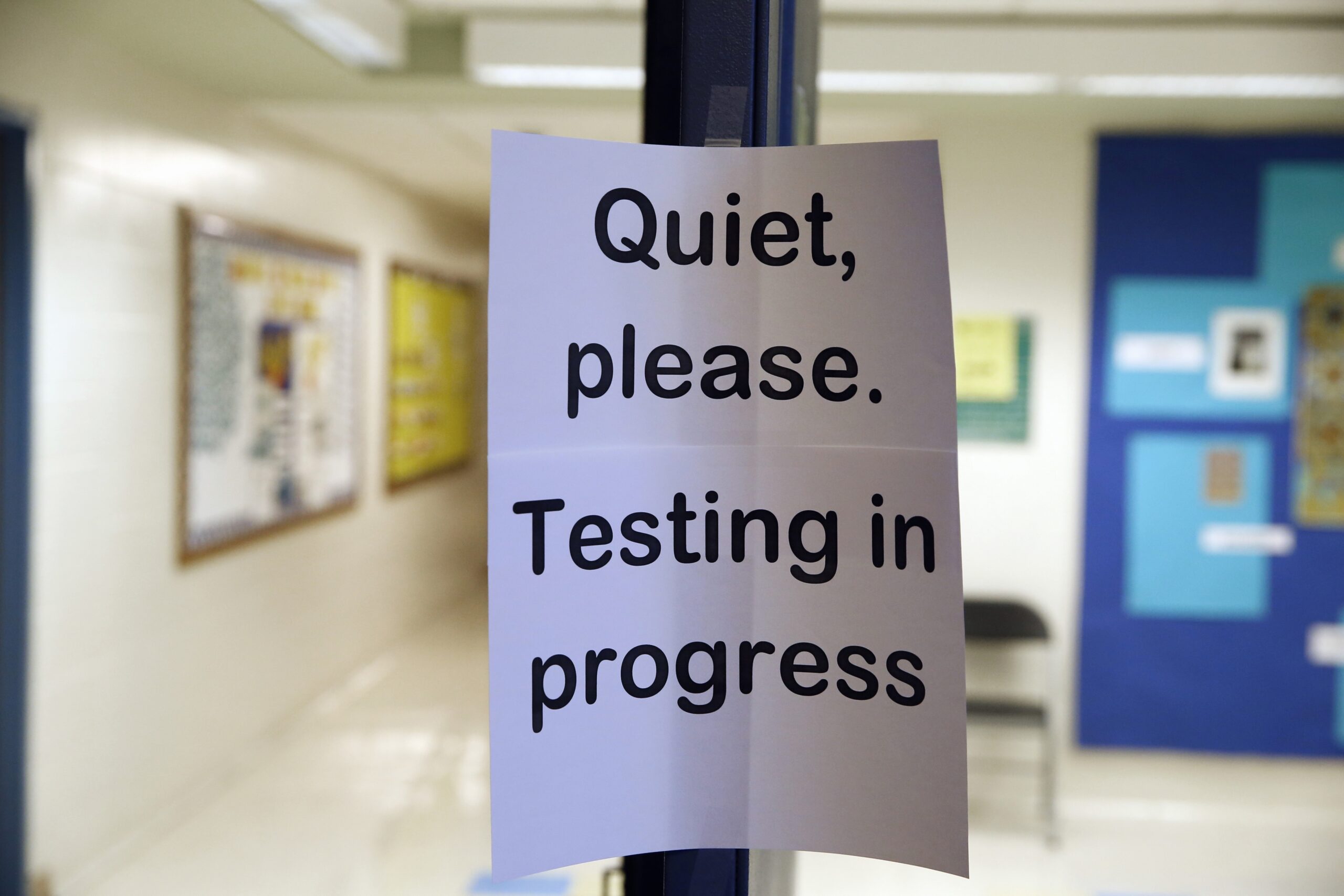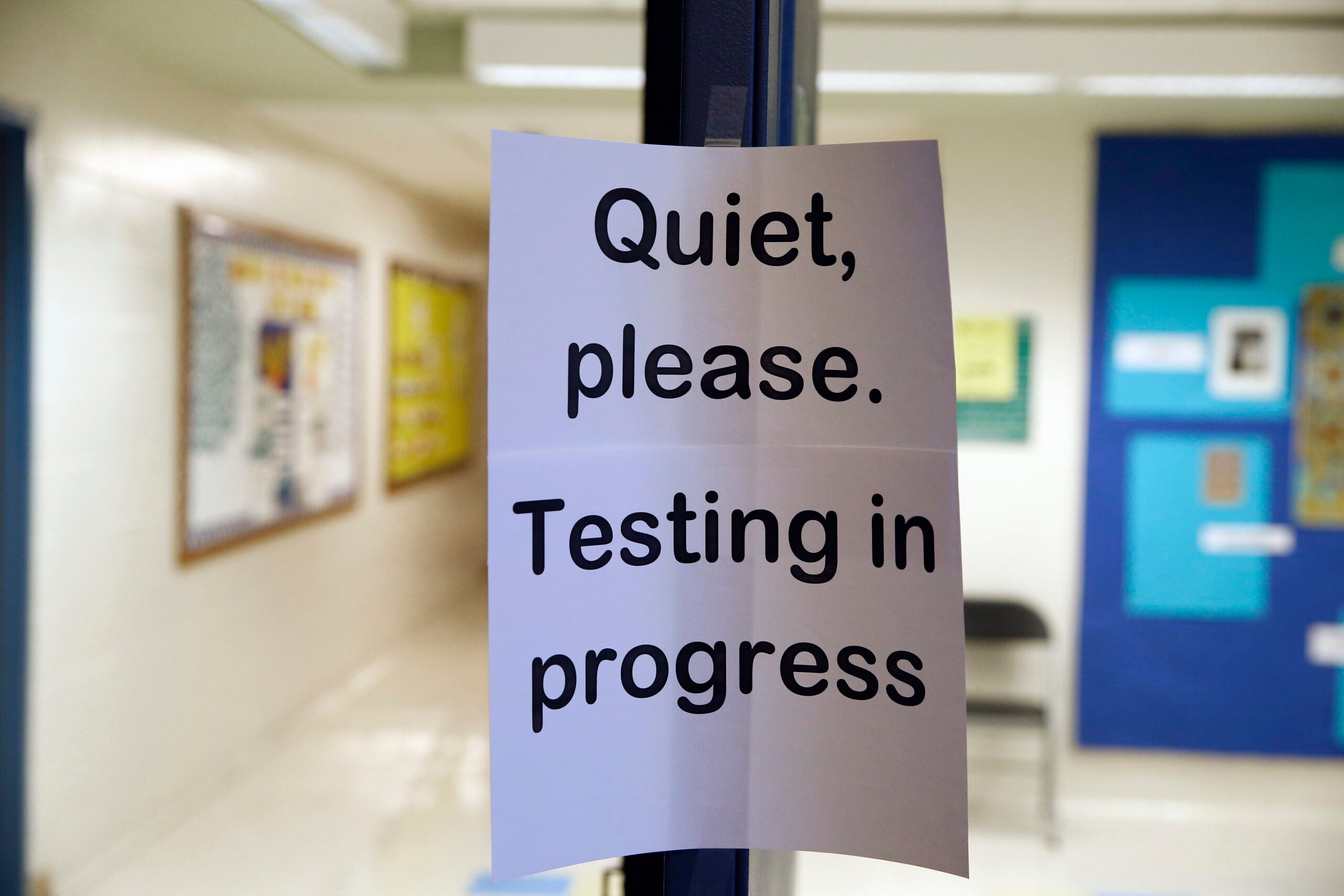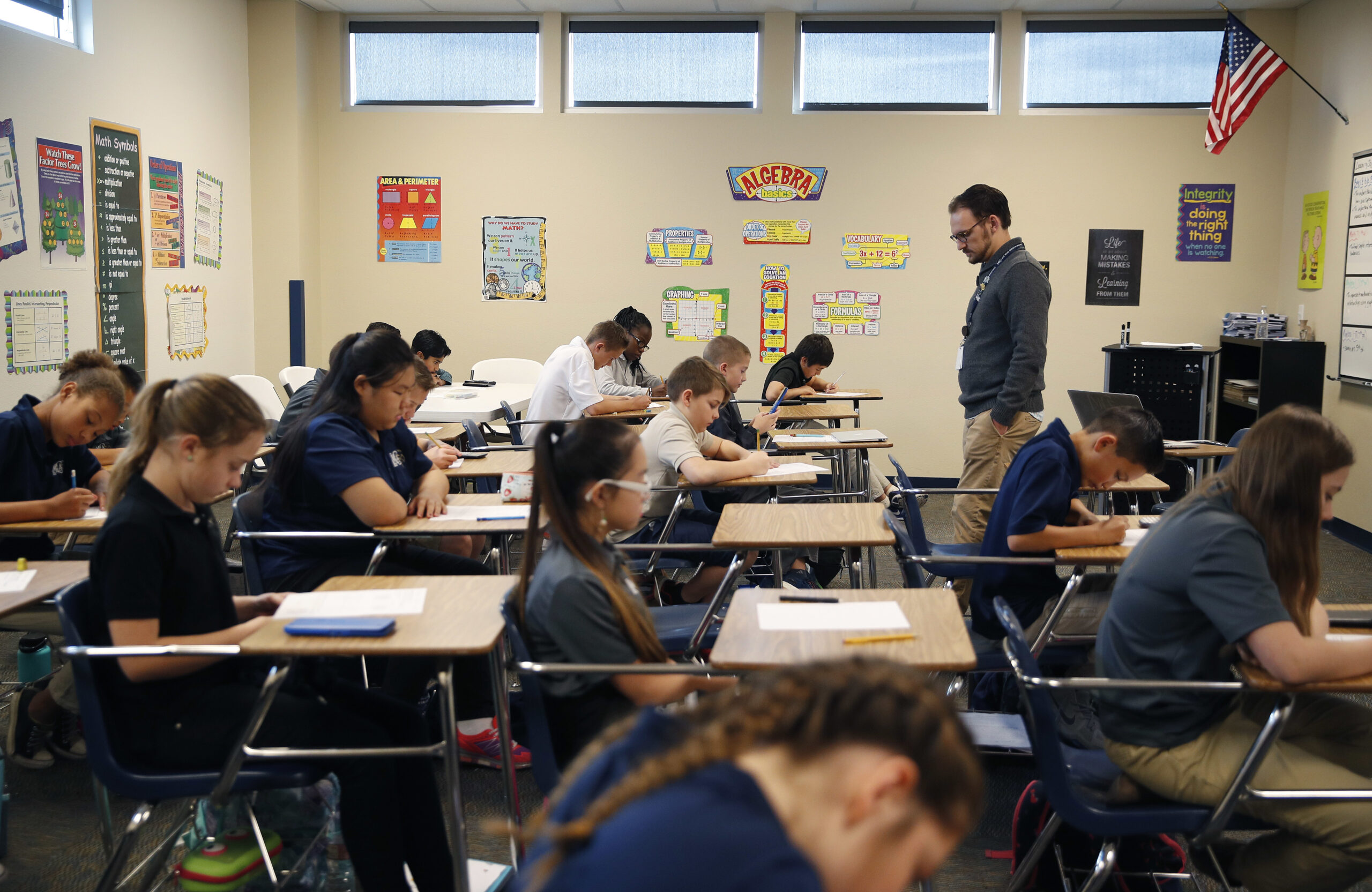For most of Wisconsin’s high school juniors, Tuesday was ACT exam day.
The ACT is a college admissions exam that, like the SAT, is often factored in alongside grades, essays and letters of recommendation to determine if a student gets into college.
For Wisconsin, it’s also a data point that helps state officials determine how students and their schools are doing on math, reading and other skills. Juniors’ scores on the March ACT and a slew of other tests for other grade levels, are used to help calculate schools’ annual report cards.
News with a little more humanity
WPR’s “Wisconsin Today” newsletter keeps you connected to the state you love without feeling overwhelmed. No paywall. No agenda. No corporate filter.
The test results may be particularly interesting this year as a measure of how students have gotten up to speed on concepts they may have missed during pandemic closures and virtual learning.
“Standardized tests like the ACT are going to really tell us for the first time how students were impacted by the pandemic,” said Isral Debruin, director of strategy and management at the Milwaukee-based nonprofit City Forward Collective, focused on educational equity. “Participation rates were so low last year that it really didn’t give us a very fair or complete picture of how student learning was impacted by learning disruptions, by the additional stressors of the pandemic — everything that kids have gone through since March 2020.”
Last year, test participation was down. About 12.8 percent of students statewide didn’t take the test last year compared to 5 percent pre-pandemic. In some districts, the drop was even sharper. Nearly 60 percent of Milwaukee juniors and 42 percent of Madison juniors didn’t take the test last year, more than double the proportion that didn’t take the ACT before the pandemic.
Yoanna Hoskins, a junior at La Follette High School in Madison, said she felt good about the Tuesday exam as a whole.
“It went well, I think,” she said. “I felt really confident with my English section and my reading section. Not so much my math section, though. And then the science section — I felt well about that one.”
Hoskins was one of 200 students who took an ACT prep class, paid for by the Madison Metropolitan School District with some of its federal relief funds, which she said helped her feel more prepared. She said she might have been a little weaker on ACT math concepts between her school’s spring 2020 shutdown and last school year being mostly virtual. Still, with the ACT prep class, she said she might be better off.
“I don’t know — if school wasn’t disrupted — that they would have gotten that money to give us the ACT prep course, or how that would have turned out,” she said.
Hoskins, whose dream schools are Stanford University and Oxford, is shooting for a composite score of 33 out of a possible 36.
On average, Wisconsin students scored a 19.1 overall last school year, down slightly from 19.8 the year before and 19.6 in 2018-19. The math and English language arts scores were also not too far outside the norm; they’re broken down by the percentage of students who score at an advanced, proficient, basic or below basic level, rather than score number.
The share of students who scored below basic on math was 36.1 percent last year, making it a higher share than the preceding year’s 34.9 percent but lower than 2018-19’s 36.6 percent. In English language arts, 25.3 percent scored below basic, compared to 25.2 the year before and 27.1 in 2018-19.
Those scores, as well as the ACT Aspire for freshman and sophomores and the Wisconsin Forward Exam and Dynamic Learning Maps for other grades, are one factor in developing the report cards put out annually for districts and individual schools by the Department of Public Instruction.
As some universities are moving away from SAT and ACT scores in admissions, though, there are students who wonder if the state should be using them, as well.
“I think we focus too much on the ACT,” said William Gottemoller, a junior at Menomonee Falls High School. “The focus is way too much on college admissions, and less on actual student performance. I guess I’m really just not a huge fan of the ACT being factored in to DPI’s data.”
DeBruin, with City Forward Collective, said the state needs long-term data to understand how high schools are preparing their students for next steps, and the ACT fits the bill — plus, it was used for years before the pandemic, which means it can provide a more direct comparison.
“It’s possible that if the ACT really becomes less and less used by colleges and universities, that perhaps, eventually, the state of Wisconsin may choose to measure learning using a different assessment,” he said. “But I have a hard time imagining we would move away from using any kind of standardized assessment at the high school level.”
Some colleges and universities were already test-optional, and many more waived SAT and ACT scores as a requirement for admission during the pandemic. In Wisconsin, the University of Wisconsin System is test-optional through the 2024-25 school year.
Ella Jiang, a junior at STEM Academy in Madison, said she’s still aiming for an ACT score of at least 30, even though her first choice school, Boston University, is test-optional.
“Although schools do say that you don’t need the ACT score anymore, because of the (pandemic) situation, I think they still would prefer it as just an extra verification that tells the school that you are qualified to join,” she said.
Wisconsin Public Radio, © Copyright 2025, Board of Regents of the University of Wisconsin System and Wisconsin Educational Communications Board.







